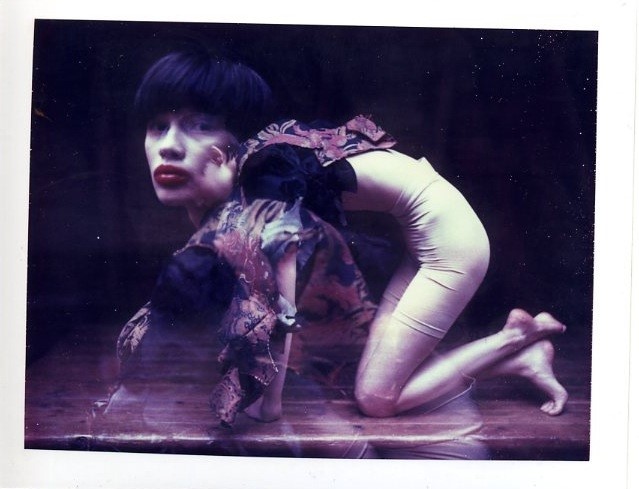Rei Kawakubo is a designer’s designer: she works under the name Comme des Garcons to respectfully acknowledge that she doesn’t create alone; she is notoriously difficult to pin down for a statement about her collection, believing that the clothes speak for themselves; and other designers have such respect for her that they happily admit the influence she has on their cuts and silhouettes.
For the next issue of AnOther magazine, AnOther Fashion Features Director Susannah Frankel did pin her down for a special feature in which we present a rare insight into her singular world. Frankel also spoke to cultural figures from Bjork to Stephen Jones about Kawakubo and their experiences of her and the Comme des Garcons brand. Here she talks a little about how it all came together.
We also preview a special edit of images of the Comme des Garcons S/S09 collection by photographer Lina Scheynius,– but you’ll have to wait for the full shoot in the magazine out Thursday, February 18.
How did people react when you said you wanted to interview them about Rei Kawakubo?
Mostly people were very generous with their time. That isn’t always the case given the fiercely competitive (or just fierce) nature of the industry.
Was there any particular word or sentiment, or way of describing Comme des Garcons and Kawakubo that kept on cropping up in people's answers?
Integrity. Anarchy. Black
What did you learn about Kawakubo that you didn't know before?
That she met Stephen Jones in an airport in Alaska
You asked the contributors what it's like to wear Comme des Garcons, how it's influenced their aesthetic, and what their earliest memories of the brand are. What are your answers to these questions?
Wearing Comme des Garcons still feels like a tribal thing. Head-to-toe black, boiled wool, shrunken knits and big trousers are all Comme des Garcons influences in my wardrobe. My first memory of Comme des Garcons is going to the store in the late Eighties when I was working at Blitz and thinking it was the most brilliantly intimidating place in the world.








